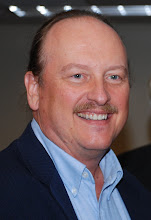A couple of years ago, I wrote a column on the so-called “FairTax” for one of our local newspapers. In it, I pointed out some of the major claims of its proponents, and then tried to point out that they are, in many cases, unfounded.
This proposal has gathered a rather small army of supporters who can certainly be called “enthusiastic”. Why they are so enthused about a proposal that does not benefit most of them is a puzzle to many. This “enthusiasm” was made clear by a letter to the editor written by one of them shortly after my previous column. Rather than simply trying to point out flaws in my reasoning, it began with a demeaning personal attack on me. I’m hoping that any replies to this piece will be focused on the facts.
So, what is this so-called “FairTax”, who is promoting it, and how are they doing so? In a nutshell, the legislation would eliminate essentially all Federal taxes and replace them all with a single tax on all new goods and all services. In essence, it is a sales tax, but would apply to services as well as goods. The proponents say that a tax rate of 23% would be sufficient to raise the same amount of revenue as do all of our current Federal taxes and the payroll taxes combined.
This number has provoked a lot of discussion. Let’s look briefly at this before proceeding. Under the plan, an item that would cost $1.30 to the consumer would, in its price, contain $0.30 of tax. They say that since 0.30/1.30 = 23%, that the tax rate is 23%. That math is correct. However, when we typically pay sales tax, we look at the price of the item BEFORE the tax is added and then add a set percentage on top of that. So, this item cost $1.00 to which $0.30 tax was added. We would call this tax rate 30%: 0.30/1.00 = 30%. This is actually just a definitional difference, but it is important because the so-called “FairTax” is often called a “national sales tax” or a “consumption tax” and these are usually computed such that the tax rate above should be viewed as 30%. Let’s not dwell on this – let’s just recognize that, depending on how it is computed, the tax rate is either 23% or 30%.
Who are the proponents of the so-called “FairTax”? Apparently, it has its origin within a group of Texas businessmen who did not like the current taxation system for a variety of reasons. They formed a group called the “Americans For Fair Taxation” and formulated the plan. It became known as the “FairTax”, and has been introduced in Congress every year since 1999 by Georgian congressman John Linder. The most vociferous proponent of the plan is, perhaps, Atlanta radio talk show host Neil Boortz. In fact, Boortz and Linder have published two books on the subject. For short, I will refer to these books by the initials of the authors “B&L”.
Several of the early candidates for President in 2008 expressed support for the so-called “FairTax”, although neither Party’s nominee did so. Among these, perhaps Mike Huckabee was the most vocal supporter. Because it is widely thought that Huckabee is already running for President in 2012, it is likely that the so-called “FairTax” will receive considerable attention over the next few years.
There are a number of claims made by this proposal’s supporters. Over the next several weeks, I’ll be looking at them in some detail. To begin this process, let’s look at what I think may be the most attractive aspect of the so-called “FairTax”. It would be the most attractive, that is, if it were true. This claim deals with the idea of “embedded” taxes and what will happen to the prices of goods and services and to the take-home pay of Americans should this plan be enacted.
From here on, I will refer to this proposal as the “FT” for short. In their initial book, B&L claimed that with the FT, the prices that people will pay for goods and services after the imposition of the tax will be essentially the same as they were before its enactment. They also claimed that everyone would get to keep 100% of their paychecks. So, quite pointedly, they claimed that prices would remain constant and everyone would get to keep their gross pay, thereby yielding an increase of, say, 25-30% in their take-home pay.
Who wouldn’t like such a scenario? I would, too, if it weren’t fantasy.
In reality, the relationship between prices and take-home pay will remain the same after the FT in put in place. Perhaps both would remain the same – perhaps both would increase by about the same amount. But the fantasy that everyone would have 25-30% more money to use on goods and services that had not increased in prices is just that – fantasy.
The claim is so far-fetched that B&L have backed off of it to some degree, even seeming to claim that they never really said it. I will take this up next, now that I have introduced this proposal to readers. You will be able to look at the quotes that I will supply and then decide for yourself what B&L said and what they meant.
Tuesday, January 27, 2009
Subscribe to:
Post Comments (Atom)





No comments:
Post a Comment